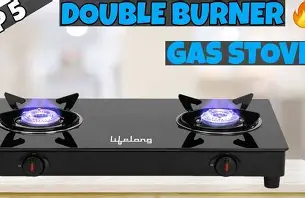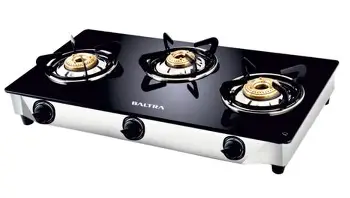
A gas stove top is a critical component of any modern kitchen, combining precision, efficiency, and durability. For professional chefs and home cooks alike, the right gas stove top enhances cooking performance, ensuring even heat distribution, quick temperature adjustments, and consistent results. Unlike electric or induction cooktops, gas burners allow for immediate control over flame intensity, making them ideal for sautéing, searing, simmering, and precise culinary techniques.
With numerous models available today, choosing the best gas stove top can be overwhelming. Modern designs vary in burner types, material quality, safety features, and overall build. From high-BTU burners for rapid boiling to sealed burners for easy cleaning, selecting a stove top requires understanding the technical specifications and performance metrics that matter most. This guide presents a comprehensive analysis of the top-rated gas stove tops, highlighting features, pros, cons, and expert recommendations to help you make an informed choice.
Why Choose a Gas Stove Top
Gas stove tops offer several advantages over other cooking surfaces:
- Precise Flame Control: Instant heat adjustment allows better cooking accuracy.
- Durable Construction: Stainless steel, cast iron, and tempered glass options ensure long-lasting performance.
- Versatile Cookware Compatibility: Works with all types of pots and pans.
- Fast Heating: High-BTU burners boil water and cook meals faster than electric alternatives.
- Professional Appeal: Preferred in commercial kitchens for reliability and performance.
Key Factors to Consider When Buying a Gas Stove Top

Selecting the best gas stove top requires careful evaluation of multiple technical features:
1. Burner Configuration
The number and type of burners affect cooking flexibility:
- Standard Burners: Ideal for everyday cooking, usually 9,000–12,000 BTU.
- High-BTU Burners: 15,000–20,000 BTU for rapid boiling, searing, or wok cooking.
- Simmer Burners: Low heat output (3,000–5,000 BTU) for delicate sauces or chocolate melting.
2. Material and Finish
Material impacts durability, maintenance, and heat distribution:
- Stainless Steel: Durable, resistant to rust, easy to clean, professional look.
- Tempered Glass: Modern aesthetic, easy to wipe spills, careful handling required.
- Cast Iron Grates: Provide stable support for cookware, retain heat, long-lasting.
- Enamel Coatings: Prevent rust, colorful options, slightly more maintenance.
3. Burner Type and Efficiency
- Sealed Burners: Prevent food debris from falling inside, easier cleaning.
- Open Burners: Classic design, easier to replace, slightly higher maintenance.
- Dual Flame Burners: Offer both high and low flames in one unit, versatile for varied cooking.
4. Size and Fit
- Measure your countertop cutout accurately.
- Standard widths: 24-inch, 30-inch, 36-inch, and 48-inch models.
- Larger kitchens may benefit from multiple burners with varied BTUs.
5. Ignition System
- Electric Spark Ignition: Quick, reliable, no matches required.
- Manual Ignition: Traditional, requires a lighter or match, simple design.
- Automatic Safety Shutoff: Shuts off gas if flame goes out, essential for safety-conscious buyers.
6. Heat Output (BTU Rating)
BTU (British Thermal Unit) measures heat output:
- Low: 3,000–5,000 BTU – Simmering
- Medium: 8,000–12,000 BTU – Everyday cooking
- High: 15,000–20,000+ BTU – Boiling, searing, stir-fry
Choosing burners with varied BTUs ensures versatility.
7. Grate Design
- Continuous Grates: Seamless support for multiple pots, easy sliding.
- Individual Grates: Separate burners, easier to replace, more traditional.
- Material: Cast iron is durable and distributes heat evenly.
Top 10 Best Gas Stove Tops of 2025 – Technical Review
1. Professional 36-inch Stainless Steel Gas Cooktop
- Burners: 5 (3 standard, 1 high-BTU, 1 simmer)
- Material: Stainless steel, cast iron grates
- BTU: 5,000–18,000
- Features: Sealed burners, electric ignition, continuous grates
- Pros: Durable, fast heating, versatile
- Cons: Large footprint, higher cost
2. Premium 30-inch 5-Burner Gas Cooktop with Wok Burner
- Burners: 5 including high-BTU wok burner
- Material: Tempered glass top, stainless steel trims
- BTU: 3,000–20,000
- Features: Automatic ignition, flame failure safety, heavy-duty cast iron grates
- Pros: Stylish, powerful wok burner, easy cleaning
- Cons: Glass surface requires careful maintenance
3. 24-inch 4-Burner Compact Gas Stove
- Burners: 4 standard
- Material: Stainless steel
- BTU: 4,000–12,000
- Features: Manual ignition, sealed burners
- Pros: Compact, budget-friendly
- Cons: Lacks high-BTU burner, basic design
4. 36-inch Gas Stove Top with Dual Flame Burners
- Burners: 5 with dual flame options
- Material: Stainless steel with heavy-duty cast iron grates
- BTU: 3,500–18,000
- Features: Electric spark ignition, safety shutoff
- Pros: Versatile, professional-grade performance
- Cons: Expensive
5. Luxury 48-inch Gas Cooktop
- Burners: 6 including 2 high-BTU, 1 simmer
- Material: Stainless steel with continuous cast iron grates
- BTU: 3,000–20,000
- Features: Dual flame, flame failure device, electric ignition
- Pros: High capacity, professional use
- Cons: Requires large kitchen space
6. Budget-Friendly 30-inch 4-Burner Gas Cooktop
- Burners: 4 standard
- Material: Enamel-coated steel
- BTU: 3,000–12,000
- Features: Sealed burners, manual ignition
- Pros: Affordable, easy to clean
- Cons: Limited high heat output
7. Induction-Compatible Gas Stove with Heavy Grates
- Burners: 5
- Material: Stainless steel
- BTU: 3,500–18,000
- Features: Continuous cast iron grates, safety shutoff, spark ignition
- Pros: Durable, versatile, professional look
- Cons: Premium price
8. 36-inch Glass-Top Gas Stove
- Burners: 5
- Material: Tempered glass surface, stainless steel trims
- BTU: 3,000–20,000
- Features: Sealed burners, electronic ignition, flame failure safety
- Pros: Sleek design, easy cleaning
- Cons: Glass may scratch or crack
9. Heavy-Duty Commercial-Style Gas Stove
- Burners: 6 large high-BTU burners
- Material: Stainless steel with cast iron grates
- BTU: 5,000–25,000
- Features: Flame failure device, electric ignition
- Pros: Commercial performance at home
- Cons: Expensive, large size
10. 30-inch Gas Stove with Smart Flame Control
- Burners: 5 (including simmer and wok)
- Material: Stainless steel
- BTU: 3,500–18,000
- Features: Flame failure safety, precise heat control, electric ignition
- Pros: Precision cooking, energy-efficient
- Cons: Moderate learning curve for smart control
Maintenance Tips for Gas Stove Tops
- Daily Wipe-Down: Remove spills after the stove cools.
- Deep Cleaning: Weekly cleaning with warm water and mild soap.
- Grate Care: Soak cast iron grates to remove food residue.
- Burner Holes: Use a soft brush to prevent clogging.
- Stainless Steel Polish: Use a microfiber cloth for shine.
Safety Considerations
- Ensure proper ventilation when using gas stoves.
- Never leave burners unattended.
- Check for gas leaks periodically.
- Use flame-resistant gloves when handling hot grates.
- Avoid placing flammable materials near the stove.
Pros and Cons of Gas Stove Tops
Pros:
- Immediate heat adjustment
- Works with all cookware types
- Professional cooking precision
- Long-lasting materials
- Suitable for high-heat cooking
Cons:
- Installation requires gas connection
- Some models are expensive
- Requires careful cleaning to maintain appearance
- Gas leaks are a potential hazard
Buying Guide
When choosing the best gas stove top:
- Assess Kitchen Space: Measure countertop dimensions accurately.
- Determine Cooking Needs: Consider number of burners and BTU range.
- Material Preference: Stainless steel for durability, glass for style.
- Safety Features: Flame failure device, sealed burners, spark ignition.
- Budget Considerations: Prices vary from budget-friendly to professional-grade.
- Ease of Cleaning: Sealed burners and continuous grates simplify maintenance.
- Additional Features: Dual flame burners, simmer functions, high-BTU for wok cooking.
Frequently Asked Questions
Q1: Are gas stove tops better than electric?
A: Gas provides immediate heat control and works with all cookware types.
Q2: How do I maintain cast iron grates?
A: Soak and scrub gently, dry completely to prevent rust.
Q3: Can a gas stove top be installed on glass countertops?
A: Yes, with proper spacing and heat insulation measures.
Q4: What is the ideal BTU range for home cooking?
A: Standard burners 8,000–12,000 BTU, high burners 15,000–20,000 BTU.
Q5: Are sealed burners worth it?
A: Yes, they prevent debris from falling into the burner area and simplify cleaning.
Q6: Can I use induction cookware on a gas stove?
A: Yes, gas stoves are compatible with all cookware types, including induction-ready pans.
Q7: How long do professional gas stove tops last?
A: With proper care, 10–20 years depending on usage and maintenance.

